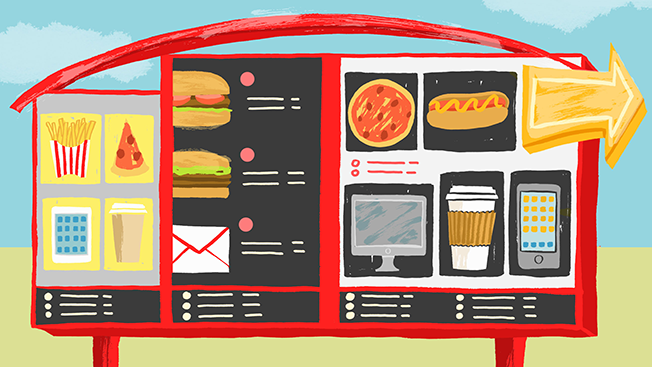There are many ways we consume content today, from the simple to the complex. And there are a variety of ways in which we consume food. Can food marketers merge the two and get results? For a few fast food brands, unconventional content marketing, from stories to emojis, proved to be the catalyst that inspired a long-lasting conversation with consumers.
Chipotle, a brand known for its content marketing ingenuity, adapted the concept of putting stories on the back of cereal boxes for burrito-eating adults. Teaming up with several best-selling authors in 2014, Chipotle launched its “Cultivating Thought” series by printing short stories on its drink cups and to-go bags. In this way, the company found creative means of entertaining its customers with products worthy of an Instagram photo or Facebook post. At the same time, it used that buzz to capture valuable consumer data from social media.
The Mexican grill chain took this content strategy a step further at its 2015 “Cultivate Festival,” where it used an app and surveys to gather feedback about its recipes from festival attendees in exchange for a free burrito bowl. The festival, which took place in Minneapolis, Kansas City and Phoenix, featured live music, food and educational exhibits about sustainable cultivation practices. The company is planning to use this feedback to tweak its recipes and align future marketing efforts with consumers’ interests.
The pizza chain Domino’s took content to the next level with its one-step pizza delivery service, Domino’s Anyware. And what exactly is one-step delivery? In this case, it’s an emoji. This past May, Domino’s began delivering pizza to consumers who tweeted or texted the pizza emoji to its Twitter account or to a special phone number. The pizza emoji option joins a long list of ordering channels within the Domino’s Anyware program, including smart TVs, smartwatches and even in cars with Ford Sync.
The pizza brand presented this as a new and more convenient ordering system. But it was also a stealth marketing campaign using the unique, playful social media language of millennials—its target demographic. Domino’s turned a simple ordering option for the digitally-savvy pizza consumer into a wealth of data sources, each with a unique advertising opportunity.
Pairing a great cross-channel strategy with the latest technology is no easy feat—many marketing teams lack the skills and tools necessary to do so. Yet some brands are finding that this is a great way to drive customer loyalty. For instance, the national wellness retailer Walgreens uses fitness-tracker data from Fitbit to reward customers for being active. Once they hit a certain milestone, they receive 20 points on their Balance Rewards card to be used towards discounts. The point being: Data from innovative tech can be put to good use right now.
Domino’s and Chipotle created thoughtful content and were able to act on the positive response to quickly capitalize on the marketing potential. Chipotle knew that just getting customers reading wasn’t enough. It was also necessary to get them talking and engaging with the core message. Likewise, Domino’s knew a pizza emoji order would make a perfect screen grab to share on Twitter, which in turn would get more and more customers interested in how simple it was to place an order. Whether your next campaign calls for a single character emoji or a complex novel, the idea remains simple: Inspire consumers with your creativity and let the data tell you where to go.









